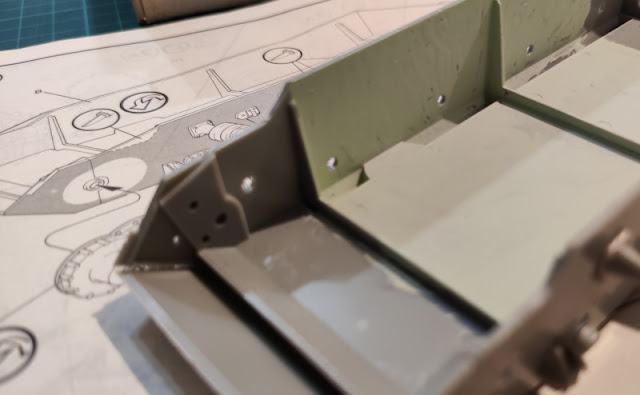Eighth session
When I got back to the model, I ended up taking care of the rear deck's assortment of engineering tools and the other equipment. One of the backup spare roadwheel holders (on the leftmost hatch, right next to the jack) snapped while I was removing it from the sprue. Despite its flimsiness I managed to fix it.
The deck contained tools that have become very familiar with other German tanks, such as those wire cutters, shovel, axe, the aforementioned jack, crank and also the barrel cleaning rod in sections on the rear wall of the casemate.
The 75mm PaK 39 had to be shortened a bit from the tip, according to the instructions. I didn't install the muzzle brake, also because my friend Tape had already liberated it from the kit to his own projects before he sold the set to me. That didn't affect my project, especially as the component wasn't required. I cleaned the seams a bit after gluing the halves together, especially the partially painted bits revealed some ugly lines.
As an interesting thematic leap the build path went to the fenders that were glued to the bottom of the casemate itself. There were ample opportunities to get corkscrewy results, but I seemed to have avoided them nicely.
Armoured plates were installed to shield the side grilles. At this point the drawings were abysmal and the pieces themselves had no clear "install here, this way" bits, slots or holes. I went eyeballing which has traditionally been a recipe for a disaster or two.
Another to the opposite side. No, it didn't look right at all.
I proceeded by gluing the fenders to the rear end of the tank as well. During the process I fortified the connections a couple of times, in case my pretty old jar of glue was getting a bit less than reliable due to impurities. There were some signs of it, but so far extra gluing had been enough to fix any issues.


































